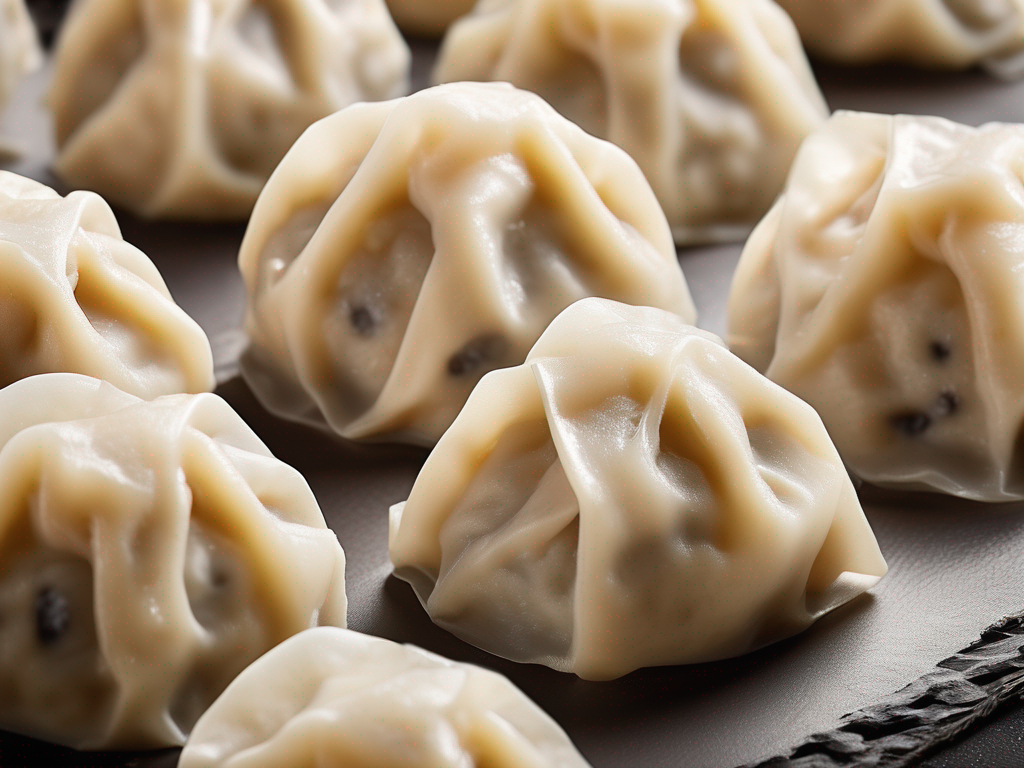
How to Properly Thaw Frozen Dumplings Before Cooking
Get Your Free Food Safety Cheat Sheet
30 most common foods with instant answers. Print it and stick it on your fridge—completely free!
How to Properly Thaw Frozen Dumplings Before Cooking
Frozen dumplings are a convenient and delicious meal option that can be easily prepared at home. However, it's essential to follow proper thawing techniques to ensure that your dumplings cook evenly and safely. In this blog post, we will discuss the best methods for thawing frozen dumplings before cooking to help you achieve the perfect texture and flavor. (Frozen dumplings)
Why Proper Thawing is Important for Frozen Dumplings
Thawing frozen dumplings correctly is crucial for several reasons:
- Even Cooking: Thawing allows the heat to penetrate the dumplings evenly, ensuring that they cook through properly.
- Texture: Improper thawing can lead to mushy or unevenly cooked dumplings, affecting their texture and taste.
- Food Safety: Thawing at the right temperature and time helps prevent the growth of harmful bacteria that can cause foodborne illnesses.
Methods for Thawing Frozen Dumplings
There are several safe and effective methods for thawing frozen dumplings. Choose the method that best fits your schedule and cooking preferences:
1. Refrigerator Thawing
Thawing frozen dumplings in the refrigerator is the recommended method as it ensures a slow and safe thawing process. Follow these steps for refrigerator thawing:
- Place the frozen dumplings in a shallow dish or on a plate to catch any drips.
- Cover the dumplings with plastic wrap or aluminum foil to prevent contamination.
- Allow the dumplings to thaw in the refrigerator for 24-48 hours, depending on their size.
2. Cold Water Thawing
Cold water thawing is a quicker alternative to refrigerator thawing. Follow these steps for cold water thawing:
- Fill a large bowl or sink with cold water.
- Place the sealed bag of frozen dumplings in the water, ensuring they are fully submerged.
- Change the water every 30 minutes to maintain a cold temperature.
- Thaw the dumplings for 1-2 hours, depending on their size.
3. Microwave Thawing
Microwave thawing is the fastest method but requires careful monitoring to prevent partial cooking. Follow these steps for microwave thawing:
- Place the frozen dumplings on a microwave-safe plate.
- Use the defrost setting or set the microwave to 50% power.
- Microwave the dumplings in 1-minute intervals, flipping them each time until thawed.
Tips for Thawing Frozen Dumplings Safely
Follow these additional tips to ensure safe and effective thawing of frozen dumplings:
- Always thaw dumplings in the refrigerator or under cold running water to prevent bacterial growth.
- Do not thaw dumplings at room temperature as it can lead to the growth of harmful bacteria.
- Check the dumplings for any ice crystals before cooking. If present, they may need additional thawing time.
- Do not refreeze thawed dumplings. Cook them immediately to maintain food safety.
Conclusion
Properly thawing frozen dumplings before cooking is essential for achieving the best taste, texture, and food safety. Whether you choose refrigerator thawing, cold water thawing, or microwave thawing, following the recommended methods and tips will help you prepare delicious dumplings every time. By taking the time to thaw your dumplings correctly, you can enjoy a safe and satisfying meal with your family and friends.
Remember, frozen dumplings can be a versatile and convenient meal option when handled and cooked properly. Enjoy experimenting with different fillings and cooking methods to create your perfect dumpling dish! (Frozen dumplings)
Authoritative Food Safety References
These agencies and university labs inform every tip and health precaution we publish.
USDA FoodKeeper – Cold Storage Guidelines
Official refrigerator, freezer, and pantry timelines maintained by the U.S. Department of Agriculture.
Visit USDA FoodKeeperFDA Produce Safety Rule & Grower Guidance
Field-to-fridge handling practices that prevent contamination of fruits, vegetables, and leafy greens.
Visit FDA Produce SafetyCDC Foodborne Illness Prevention Hub
Surveillance-backed guidance on pathogens, symptoms, and steps to reduce foodborne illness risk.
Visit CDC Food SafetyUC Davis Postharvest Technology Center
University research detailing optimal storage atmospheres for produce after harvest.
Visit UC Davis PostharvestPenn State Extension – Home Food Preservation & Safety
Peer-reviewed extension bulletins on safe canning, chilling, and reheating practices.
Visit Penn State ExtensionGet Your Free Food Safety Cheat Sheet
30 most common foods with instant answers. Print it and stick it on your fridge—completely free! Want more? Upgrade to the complete guide with 70+ foods.
Scan your food directly and get instant safety info using our AI-powered camera feature.